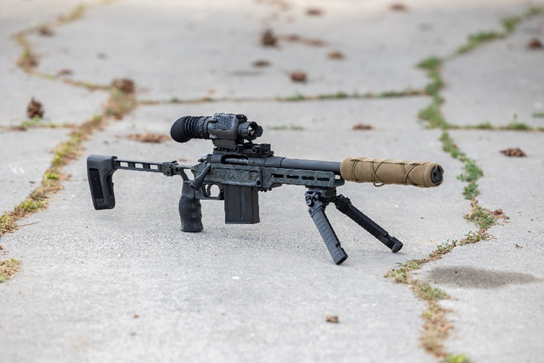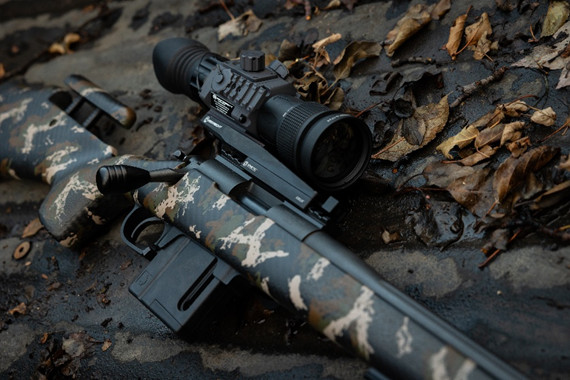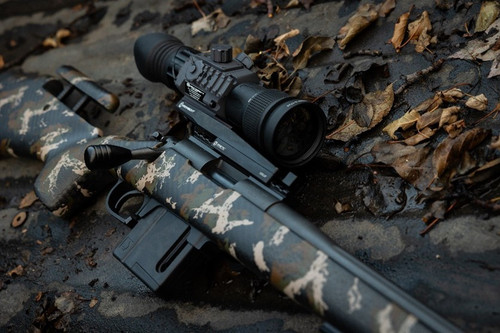Thermal Scope Use in Daylight: What You Need to Know
Feb 7th 2025
If you’ve ever used or considered getting a thermal scope, you’ve probably heard that they’re great for nighttime use. But what about daylight? Can these devices still be useful when the sun is shining bright? The short answer is yes, but there are a few things you need to know to make the most of them.
Let’s break it down.

How Thermal Scopes Work
To understand how a thermal scope can be used during the day, it helps to first know how they work. A thermal scope detects infrared radiation, or heat, from objects in its view. It doesn’t need any light to function—just heat. The scope then displays an image based on temperature differences between objects and their surroundings.
In daylight, the scope picks up heat signatures just like it does at night. The difference is that the sun heats up many surfaces, causing them to emit heat too. This can sometimes create a bit of background noise in the image, but the scope is still able to highlight differences in temperature.
For example, a hot object like a deer in the woods will stand out because it’s warmer than the surrounding environment. The best thermal scope will show you this difference clearly, even in bright sunlight.
Using Thermal Scopes During the Day: What to Expect
When you're out in the field during the day, you’ll notice that thermal scopes handle sunlight a little differently than they do in complete darkness. Daylight brings some challenges, like heat from the sun warming surfaces. This can create some noise in the thermal image, making it harder to distinguish heat signatures.
But don’t worry—this doesn’t mean thermal scopes are useless in daylight. In fact, they still offer some great advantages. For example, thermal scopes are excellent for spotting animals or people hiding in dense vegetation. Even in daylight, an animal's body heat will show up clearly, while the surrounding plants will be cooler. This makes it much easier to spot them, even when they’re well camouflaged.
Thermal scopes are also useful for monitoring areas like fields, forests, and even urban settings. They can help identify heat signatures from machines, people, or animals, all of which can be hard to spot with the naked eye.
Challenges of Using Thermal Scopes in Daylight
While thermal scopes are powerful, they do have some limitations when used in the bright light of day. One of the biggest challenges is the thermal noise created by the sun. Surfaces like rocks, vehicles, or buildings can heat up in the sun. This makes it hard to distinguish between background heat and the objects you're trying to spot.
Another issue is the reduced contrast between heat signatures and their surroundings. In the dark, thermal scopes can easily pick out a warm body against a cooler background. During the day, however, the environment might be warmer overall, and the difference between the object and the background may not be as stark.
But don’t worry—these issues are not deal-breakers. With the right adjustments, you can still get a clear view.
Tips for Optimizing Daytime Performance
To get the best out of your thermal scope in daylight, you’ll need to adjust a few settings. Let’s start with calibration. Your thermal scope needs to be properly calibrated for the environment you're in. If the surroundings are too warm, you might need to fine-tune the settings to account for the ambient temperature.
One of the easiest ways to enhance daytime performance is by adjusting the contrast and brightness. Many thermal scopes allow you to switch between different color palettes, such as black-hot, white-hot, or red-hot. Experiment with these to find one that gives you the clearest image in daylight conditions.
In addition, it’s a good idea to avoid using the thermal scope in areas that are directly exposed to the sunlight, as this can make everything look too warm. Instead, try using it in shaded areas or during the early morning or late afternoon when the temperature difference between objects and their surroundings is more pronounced.
Battery life is another important consideration when using thermal scopes in daylight. Bright conditions can drain your battery faster, so always bring extra batteries. You can also take a portable charger if you plan on using your scope for long periods.

Applications for Daytime Use of Thermal Scopes
Despite the challenges, thermal scopes still have a lot to offer in daylight. Here are some ways they can be used during the day:
-
Hunting and Wildlife Observation
Thermal scopes are perfect for hunters who need to spot animals in dense forests or other hard-to-see areas. Even when the sun is out, animals like deer, which have body heat, will stand out against cooler backgrounds like the foliage.
-
Search and Rescue
In rescue operations, a thermal scope can help locate missing persons or animals during the day. The heat from their body will show up clearly, even if the surroundings are bright and warm.
-
Security and Surveillance
Security personnel can use thermal scopes to monitor a property in daylight. A thermal scope can easily detect people or vehicles even in broad daylight, helping identify intruders or track movement.
-
Industrial Inspections
Thermal scopes are also used in industries for detecting heat leaks or inspecting machinery. In daylight, they help identify areas that might be overheating, which is essential for safety and efficiency.
Features to Look for in the Best Thermal Scope for Daytime Use
If you're considering a thermal scope for daylight use, here are some important features to look for:
-
High Resolution
A higher resolution means clearer images, which is especially important for daytime use when heat signatures can be less distinct. The best thermal scope for daylight will offer a high resolution to help you spot targets more easily.
-
Wide Field of View
A wide field of view helps you scan larger areas quickly, which is useful when you’re tracking something over a distance.
-
Adjustable Color Palettes
A scope with different color palettes will give you more flexibility in adapting to changing light conditions.
-
Long Battery Life
Since thermal scopes can drain power quickly in bright sunlight, choose one with long-lasting batteries or options for quick charging.
-
Rugged and Durable Design
Thermal scopes need to be durable enough to handle outdoor environments. Look for one that’s built to withstand drops, moisture, and extreme temperatures.
If you’re looking for a thermal scope that’s built to handle both day and night, Armasight offers a variety of options. Our scopes are designed to perform well under a wide range of conditions, including daylight. Investing in a high-quality thermal scope like those from Armasight ensures that you’ll have a reliable tool that works when you need it most.
Conclusion
A thermal scope is more than just a nighttime tool. It can be incredibly effective in daylight too—once you understand how to work around the challenges. With the right adjustments, you can spot animals, people, or heat sources with ease, even when the sun is out.
If you’re looking for the best thermal scope for all conditions, including daylight, Armasight has options designed to help you get the most out of your equipment. From hunting to security to industrial applications, the right thermal scope will be your eyes in any environment.

